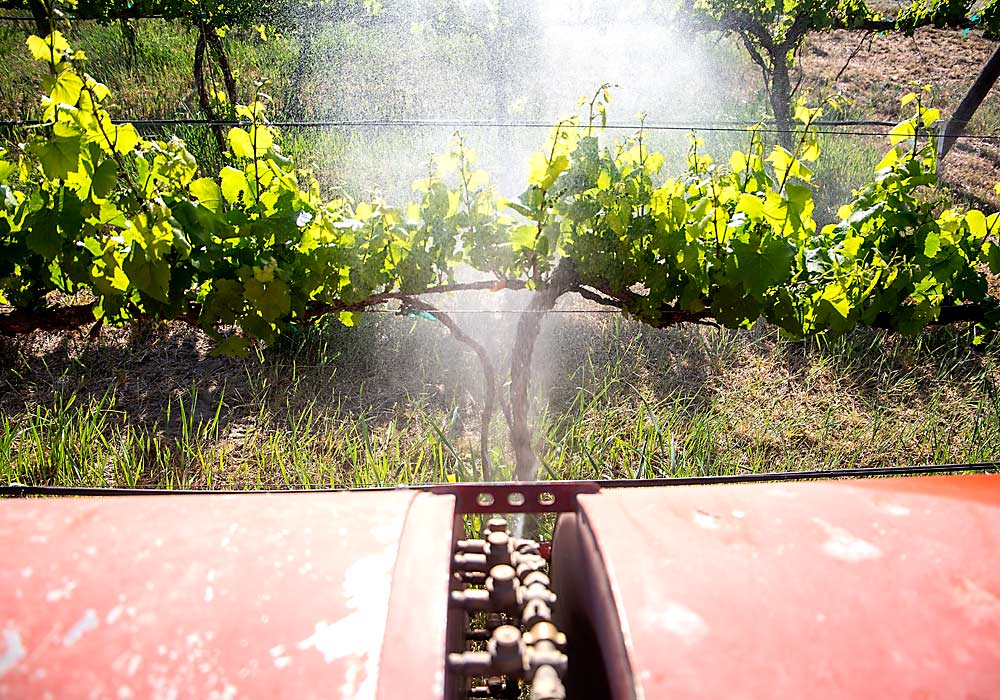
In theory, ozonated water should work to thwart powdery mildew, mealy bugs and pear psylla.
Re-entry intervals would last mere minutes — and residues? What residues?
But making it work on a vineyard or orchard scale has proved challenging to a couple of researchers on opposite sides of the United States.
“Is it a snake oil or is it really able to do something?” said Lav Khot, an associate professor of biological systems engineering at Washington State University’s Center for Precision and Automated Agricultural Systems in Prosser.
Khot has begun field trials to determine the potential of ozonated water for pest control, thanks to a $300,000 New Innovator Award from the Foundation for Food and Agriculture Research. WSU and a Washington Specialty Crop Block Grant matched the funding, bringing the total to $600,000. He is doing the same for thermotherapy with horticultural oil, testing whether heating up the oil boosts its efficacy.
Ozone has a well-established presence in the food industry. It works as an antimicrobial cleaner for food preparation and processing and is commonly used to sterilize brewing and fermentation tanks. Tree fruit warehouses use ozone gas in controlled-atmosphere storage and ozone liquid on packing lines as an organic way to control mold, bacteria and other pathogens.
Khot and his WSU collaborators are trying to put ozonated water to use in vineyards, to control powdery mildew and mealy bugs, and in pear orchards for psylla control.
So far, the ozone generator attached to his orchard spray tank has not been able to deliver concentrations consistently high enough. Ozone, or O3, so badly wants to shed its third molecule and reduce to its more stable cousin, oxygen, that it begins the chemical change inside the spray tank, especially in irrigation water, which is laced with organic matter. By the time it reaches the leaves, little ozone is left.
That engineering problem would have to be solved for ozonated water to make sense for a grower, Khot said. He’s considering injecting it at the point of the spray nozzle instead of in the tank.
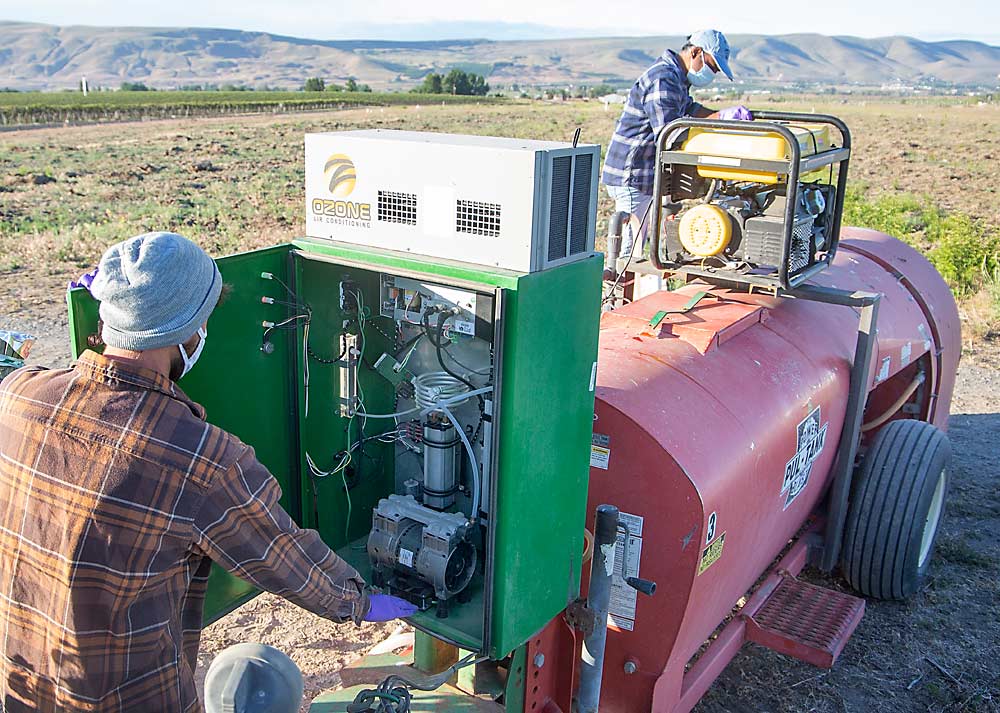
Eastern experience
The idea of spraying aqueous ozone in vineyards has a history in Michigan.
Trickl-Eez Irrigation of St. Joseph purchased an ozone generator to work with orchard sprayers from AgriOzein, a Nebraska company at the time. Grape growers told Trickl-Eez it worked for mildew control when pressure was low but struggled to catch up when pressure was high, said Chris Lattak, a systems designer for Trickl-Eez. Many of them admitted they simply didn’t use it often enough.
The growers also anecdotally noticed lower insect pest populations, Lattak said.
The company asked Matthew Grieshop, a Michigan State University entomologist, to put it to the test.
Funded by the Michigan Apple Committee, Grieshop used the ozone generator for a year on apple scab, a major fungal disease in the Eastern U.S., and a variety of insects in replicated trials at the Clarksville research station.
It worked on none of those things, Grieshop said. They could only get 1 part per million of ozone concentration in the tank and just a fraction of that at the nozzle, even when adjusting for the largest droplet size possible, running the generator at full capacity and using the oxidation reduction potential measurements recommended by AgriOzein and with the equipment Lattak provided.
“It was such a big failure that we basically decided we weren’t going to repeat this,” he said.
He and his colleagues published their results in the summer 2019 issue of the New York State Horticultural Society’s Fruit Quarterly. (Khot received the funding to start his project before MSU published their findings.)
Grieshop couldn’t get aqueous ozone to work in the laboratory, either. He and his students actually submerged spotted wing drosophila — a feeble, soft-bodied insect — in aqueous ozone for 30 seconds at 18.5 parts per million, 20 times the concentration of the spray nozzles. The insects died at the same rate as the control group, even after checking on them three days later.
“We have data that this absolutely does not work on spotted wing drosophila,” he said.
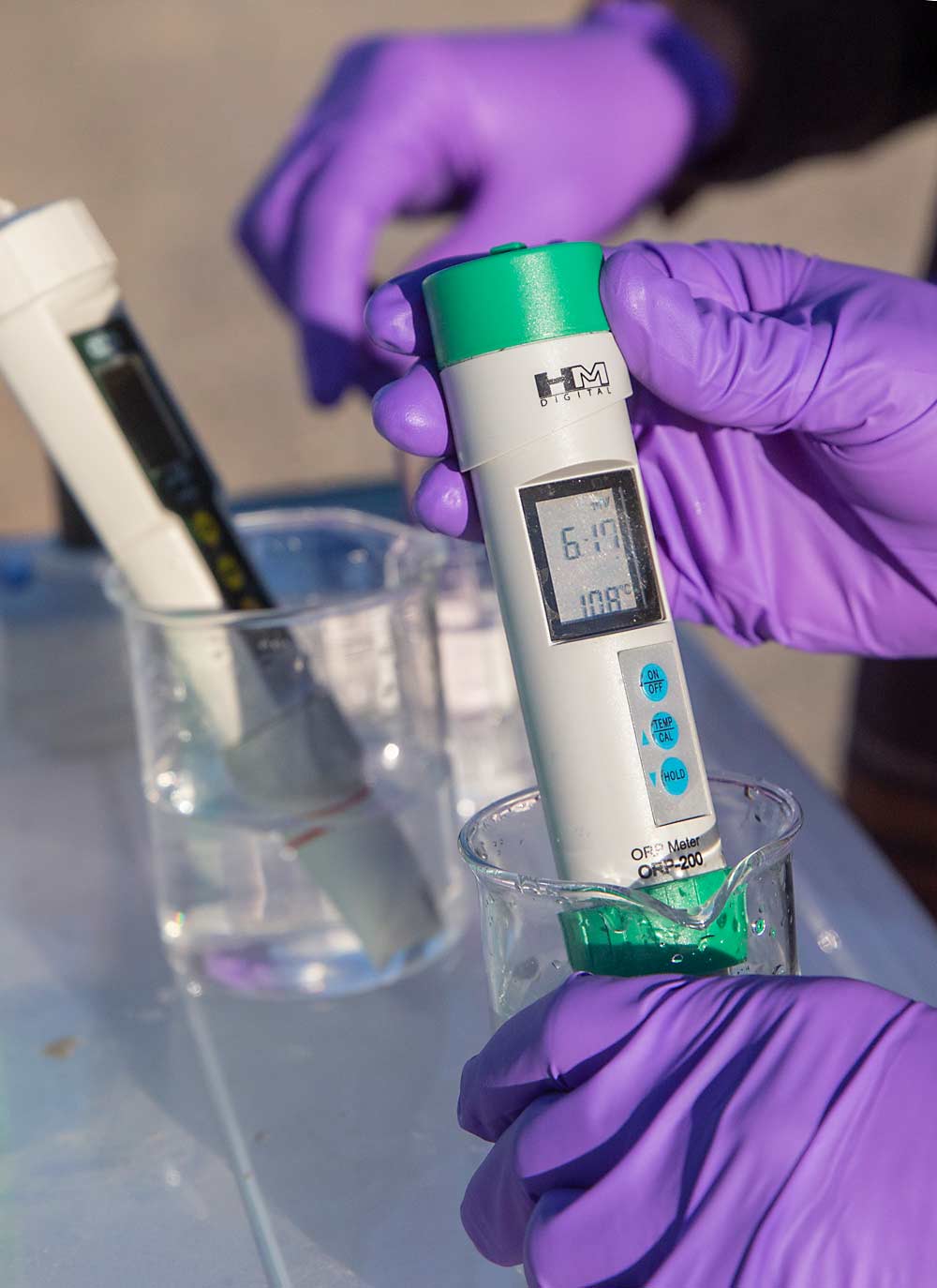
If it won’t work in the lab on spotted wing drosophila, it likely won’t work in the field, he said. It may work against diseases or eggs, but he recommends researchers start testing it in the lab under controlled circumstances with rigorous dose response trials before taking it to a vineyard.
The negative results should prevent growers from wasting money with equipment vendors making claims of efficacy, Grieshop said.
Not ready to give up
Lattak does not want to dismiss the technology yet. With other MSU researchers, he has been in discussions about trying to pump ozone through the Clarksville station’s solid set canopy delivery system, which might let operators overcome the concentration problem by just turning it on for longer periods and at repeated intervals. And just because it doesn’t kill bugs doesn’t mean it won’t create undesirable conditions.
Science may still find a sweet spot of concentration, interval and contact time, he said.
“It’s not something any of us involved with it are ready to give up,” Lattak said. “There’s more to be explored.”
AgriOzein has since moved to Burnet, Texas. The company’s website features favorable trial data from several vineyards. President and founder Ernie Wilmink said he is working on projects with date farmers, golf courses and other customers.
After reading the Fruit Quarterly article, Wilmink questioned the research methods. He said the system is supposed to use a tower sprayer with appropriate nozzles that don’t decrease the ozone concentration.
Khot and Grieshop counter that tank mixing is tank mixing, and that sprayer style won’t affect concentrations — and Wilmink helped Trickl-Eez retrofit the generator himself.
Out at WSU, Khot is not yet ready to call the results all negative, either.
His team also has been frustrated with the concentration of ozone in the tank, but lower concentrations of ozonated spray might work as a sanitizer to wash away pesticide residues from grape vines and pear trees, as well as pear tree honeydew, the sticky waste-product generated by pear psylla. And, at higher concentrations, it may disorient psylla and mealy bugs or work on eggs.
Through the FFAR grant, Khot’s team has developed lab-scale systems that consistently deliver concentrations up to 13 parts per million. (Concentration is affected by pH, temperature and impurities in the water.) They also are conducting dose response trials and trying to understand the effect of spray droplet size and application rate on the mortality of powdery mildew, mealy bugs and pear psylla.
“The bottom line is we don’t know the efficacy of the system,” he said.
—by Ross Courtney

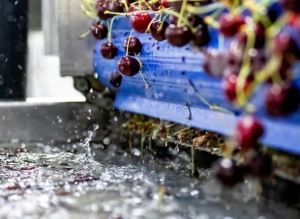
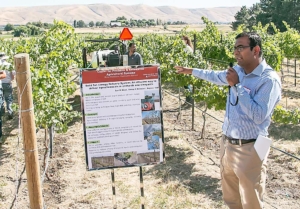





Leave A Comment